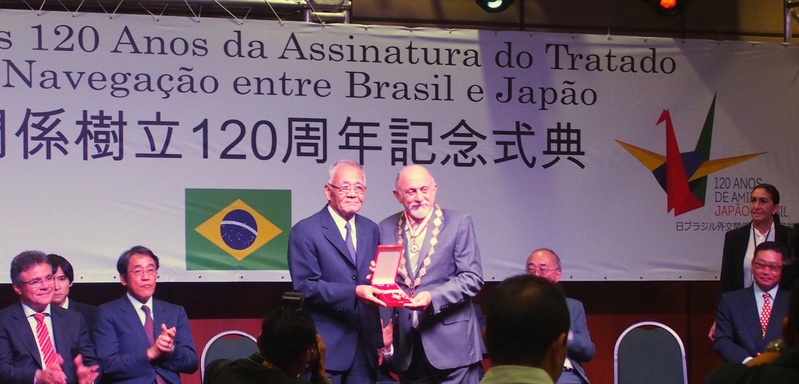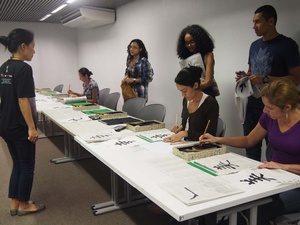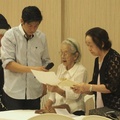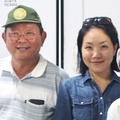It has been 120 years since diplomatic relations between Japan and Brazil were established in 1895. Since then, various commemorative events have been held throughout Brazil to strengthen the relationship between the two countries in various fields such as culture, art, and economy. At the annual book fair held in Belem the other day, the theme country of Japan's culture was introduced. A 120th anniversary ceremony was also held, where Governor Simon Giattene awarded medals to 14 Japanese organizations and companies, including the Hokubu Japanese Language Promotion Center, where I am currently working. It must have been very pleasing for all involved to be recognized for their long years of Japanese language education in Hokubu (northern Brazil). In particular, the first generation teachers who have built the history of Japanese language education in Hokubu and are still active at the front lines must have felt that their hard work was rewarded.
First-generation Brazilian teachers who immigrated to Brazil after the war founded Japanese language schools and began teaching the national language in order to pass on Japanese culture, including the Japanese language, to children. However, as second- and third-generation Brazilians received education in Brazil and stopped using Japanese, education changed to teaching Japanese as a foreign language. They brought in experts from Japan to learn Japanese language, and in 1993, the Hokuhaku Japanese Language Promotion Center was established as an organization to coordinate schools in the region. Initially, the total number of students at member schools was about 1,300. With the hyperinflation that hit Brazil in the 1990s, the number of Brazilians migrating to Japan for work increased, and the number of students gradually decreased.
22 years later, the number of students has gradually recovered due to the recent Japan boom and the entry of Japanese companies into the country, and is now at 1,231, 74% of whom are non-Japanese. 21% of the teachers are non-Japanese, and in recent years, the number of Brazilians who are interested in Japan has been increasing. In most cases, the motivation for them to start learning Japanese is anime, and their interest first begins with "Japanese culture," and then moves on to the deeper topic of "Japanese culture."
What makes Japanese language education here unique is that, unlike in the south where second-generation teachers dominate, first-generation teachers who immigrated after the war are still active, and the teachers are third-generation teachers who came to Japan with their parents to work and returned to Japan after completing compulsory education. Many of them use their unique skills to teach Japanese while studying at university or working other jobs. However, it will be financially difficult for them to continue this work in the future. Another feature here is the presence of teachers in their 40s who came to Brazil after getting married. They are the next generation of teachers who will take over from the first-generation teachers.
When Prime Minister Shinzo Abe visited Brazil in August last year, he said that he would increase the number of JICA volunteers to 100. He said that he wanted to strengthen support in the areas of culture and sports, including Japanese language education. This includes the promotion of Japanese culture in Brazilian society, and the various 120th anniversary events being held all over Brazil seem to be having a significant effect.
Many aspects of Japanese culture were introduced at this book fair, including the tea ceremony, flower arrangement, koto, and origami, and calligraphy, which I was in charge of. During the 10-day period, we held three two-hour sessions, and the number of applicants was higher than expected. Participants from the first session came to help out later, and students from the schools where we taught calligraphy also came. Most of them were holding a brush for the first time, and they wrote each stroke nervously, but I was surprised that they were better than I had imagined. What made me happiest was that so many people were interested and very satisfied with their first experience. I think that the fact that the Brazilians were happy was a part of the spread of Japanese culture in Brazilian society and a part of 120 years of history.
The award is a heavy one, and I would like to continue contributing as a volunteer at the center.
© 2015 Asako Sakamoto








